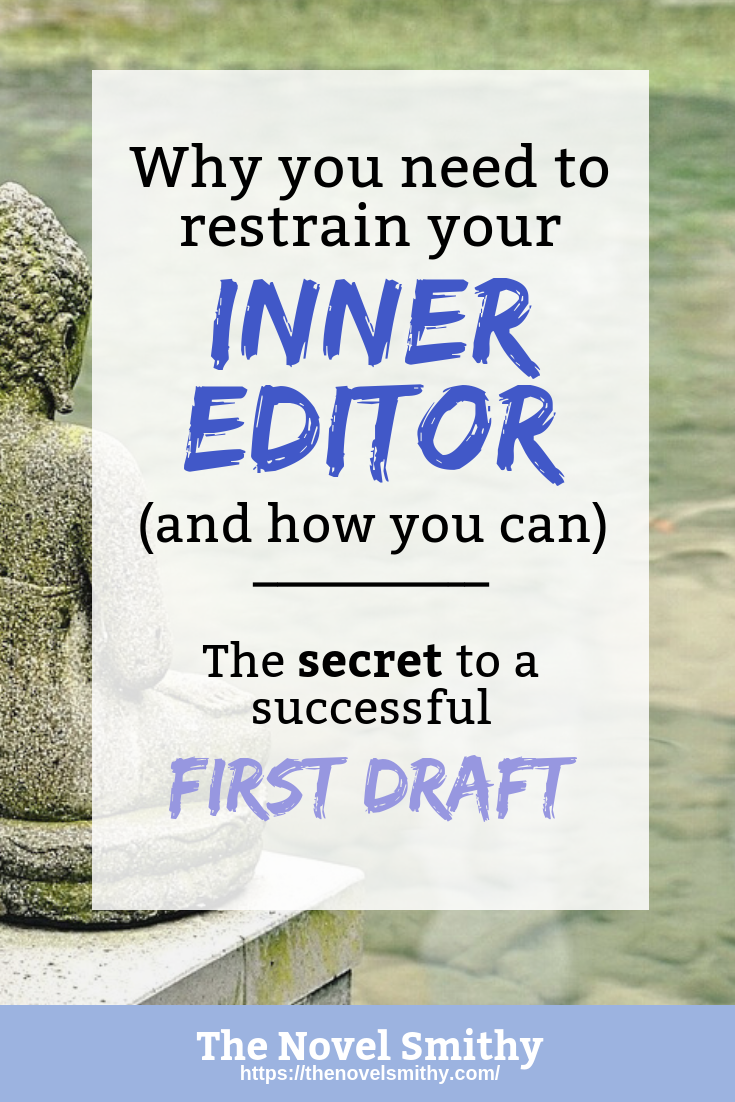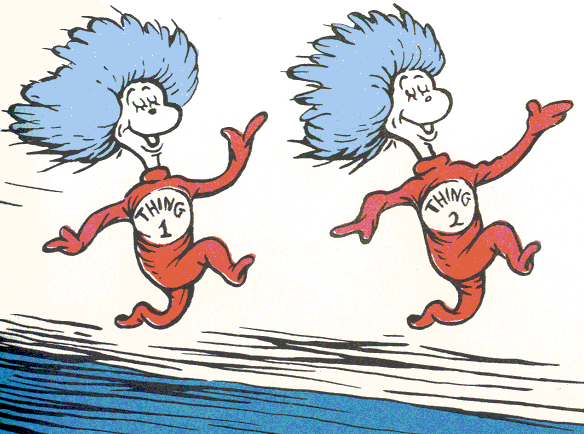How to Restrain Your Inner Editor (Or Even Defeat It)
There’s a secret killer out there, looking for ways to ruin your novel.
You may already be familiar with this shady character. You’re writing along, making great progress, thoroughly in love with your story. Yet, suddenly, you stop and reread a previous scene. Your work grinds to a halt. It wouldn’t hurt to rewrite that last paragraph. Perhaps you can fix some wording here, a poorly structured sentence there…
The problem is, an hour later you’ve spent all of your time editing your previous work instead of writing anything new. What’s worse, you’ve grown bitter and doubtful—if there are this many flaws in your writing, it must all be awful, right?
Facing Your Inner Editor
Contents

If you’ve ever heard these harsh inner voices, what you’ve fallen victim to is your inner editor. This nagging voice pushing you to doubt your work, to go back and obsess over it until its “perfect,” has haunted writers since writing began.
Worst of all, it’s one of the biggest things standing between you and a finished novel.
In fact, every writer struggles with it at some point on their journey.
I myself had a paralyzing habit of going back over my writing two or three times before I could finish each scene. Not only did this disrupt my flow, but it gave me the constant, sinking feeling that my writing just wasn’t good enough.
Learning to restrain this inner editor has been one of the best things I’ve done for my writing, and despite how much trouble your inner editor causes, you’d be surprised how simple it is to stop in its tracks.
There’s a time and a place for your inner editor, but your first draft isn’t that place. So how can you change your mindset and take back your writing time?
5 Ways to Silence Your Inner Editor
Change Your Writing Mindset:
Making progress as a novelist requires the willingness to write new work, even if you’re unsure of the quality of your old work. So how can you do this if you’re always drawn to fixing your work as you go?
How can you balance these two halves of the writing process?
Well, one of the first changes you can make is simply shifting your mindset. Let me ask you—what’s the purpose of your first draft? Is it meant as the final form of your novel? Or is it a foundation, a way for you to get the basics of your story on paper to build upon later?
I know, I know. That’s a somewhat obvious question, but be honest with yourself: How do you actually think about your first draft?
When I realized how much my inner editor was holding me back, I also had to realize that my mindset when writing first drafts was a part of the problem. Instead of recognizing that my first draft was meant to be a flawed stepping stone towards my finished novel, I wanted it to be perfect, just like the scenes in my head.
So next time you sit down to work on your first draft, pause and remind yourself what this draft is really all about:
- A way to get your raw idea onto paper
- A space to experiment and try new ideas
- A playground free from grammar
- A stepping stone towards your finished novel!
Embrace your work’s flaws and allow them to exist because they mean your story has room to grow and improve, and that’s a good thing!
“The first draft of anything is shit.” – Ernest Hemingway
Start In A New Document:
Of course, changing your mindset will probably take practice across more than a handful of writing sessions. What’s something you can put into practice now to restrain your inner editor?
Well, one of the easiest things to do is to cut your inner editor off, cold turkey style!
When you next sit down to write, copy the last paragraph you wrote onto a new document or page in your notebook. For today’s writing session, this is all you have to work with. You can’t go back to the other document or flip back a few pages. All you can do is focus on that last paragraph and write.
While this method takes a lot of self-control it can be very effective, especially if you have a tendency to edit yesterday’s (or last week’s) work instead of writing new scenes. This way, you have just enough to remember where you left off, but not enough to get sucked into the cycle of feeding your inner editor. This is a harsh method, but also an effective one!
Create Dedicated Editing Time:
Now, some of you may wonder: what if I enjoy editing? Genuinely, honestly enjoy chewing over my previous work and making it better?
Well, while I’d still discourage you from spending all of your writing time editing your previous work (that’s what the second draft is for), I’m actually on your side more than I’ve let on. I love editing my work and get a lot out of going back over it and cleaning up scenes as I go.
However, I also know I’ll waste all of my writing time on editing if I’m not careful.
So here’s an idea for those of you who are like me! Just create a dedicated editing time. Much like how you may set out thirty minutes or an hour to write, do the same for your editing. Perhaps even schedule them on separate days to give yourself time to find your flow.
What I’ve found works for me is to work for thirty minutes every morning. Mondays, Wednesdays, and Fridays are writing days, while Tuesdays and Thursdays are editing days. I have more writing days overall, but I still give myself space to enjoy editing, even when I’m knee deep in my first draft.
Of course, the key to this working is to make sure your writing time is actually used to write. Inner editors are notoriously greedy. Even if you’ve set out dedicated time just for them, they’ll try to encroach on your writing time anyways.
Inner editors are greedy—even if you set aside time just for them, they'll still encroach on your writing. #amwriting Share on XUse Placeholders:
Another breakthrough I’ve had in my own writing is learning (and becoming comfortable with) using placeholders!
Sometimes when you’re writing you’ll run into place names, new characters, or even whole scenes that you just… don’t know how to write. You’ll sit there dumbfounded, unsure how to progress, until your whole writing session is over. And next time you sit down to write you’ll still be stuck in the same place!
Of course, you’ll have to work through these roadblocks eventually, but the first draft isn’t necessarily the place to do so.
As you write your first draft, your story will inevitably grow and evolve, and some of these details will work themselves out on their own. The other ones are likely best left to the second draft, where you have a much better idea of your story. So as you’re working on your first draft, don’t be afraid to put in placeholders when you’re unsure! If you’re stuck on a whole section, jot down a few bullet points to get your cast to the next scene.
Or, if you’re struggling to name places or characters, make something up!
No joke, I’ve named multiple cast members Dr. Seuss characters as placeholders. If I had a penny for every time I’ve named someone “Thing 1” or “Thing 2,” I’d be able to take myself to a very nice dinner. Just keep it consistent so you’ll know who you’re talking about when it’s time for the second draft.

Create a Writing Challenge:
Finally, for the last method on this list we have a seasonally appropriate challenge!
With NaNoWriMo coming to a close, many of you may have spent the last month running a writing marathon, trying to write 50,000 words in just thirty days. Why not apply the same principles to your everyday writing habits? After all, a great way to silence your inner editor is to drown it out with the pressure of a good writing challenge.
There are a limitless number of variations for this, but here are a few ideas!
- Task yourself with writing continuously for a period of time, be that ten minutes or an entire hour
- Test how many words you can write in five minutes, setting a difficult goal for yourself so you won’t waste any time
- Challenge yourself to write an entire chapter in one day (and if you finish with time to spare, edit to your heart’s content!)
Of course, creating a writing challenge that fits your personal style, time constraints, and writing speed is important if you want to succeed and not burn yourself out. Take the time to tweak these until they fit your needs, or come up with some of your own.
When Should You Embrace Your Editor?
After going through all of these methods, you probably feel like your inner editor is a dangerous demon, something to avoid at all costs. I mean, if people go to such lengths to silence it, doesn’t that mean it’s bad?
Well, not exactly. Your inner editor can definitely be a hindrance when writing your first draft, but at the same time…
It’s your best friend when it comes time to write your second.
Wait what!?
Yep, you heard me. Your inner editor is your best friend! A best friend that can be a nagging, outright pain, but a friend none the less. In the end, it all comes down to when you let your inner editor dictate your writing process. When you’re working through your first draft, arguably the most fragile and fraught stage of the writing process, they’re best left in the background.
However, when it comes time to take that completed first draft and turn it into an amazing novel, your inner editor will take center stage and help guide your self-editing process. So, don’t be afraid of your inner editor. In fact, embrace them!
Just know that sometimes they’re best left to the side.
Speaking of self-editing, now that NaNoWriMo has come to a close I imagine a lot of you are wondering what comes next for the first drafts sitting on your desk. Well, keep an eye out on the blog, because December is self-editing month at The Novel Smithy!
I hope you’ll join me as we tackle everything from scene structure to pacing and plot holes 🙂


I actually read this blog post while researching some formatting, while self-editing my first draft. Ugh.
But! I’ve learned some valuable, practical ways to cage that beast! Now, I’ll get back to my pages.
Thank you very much!
I’m glad to hear it was helpful! And good luck—you can do this. 🙂
My inner editor it what stopped me from proceeding with my first draft. I was spending way too much time editing and not enough writing. Thank you for the tips. I will definitely be trying those out.
I definitely understand where you’re at Melissa. The first draft is such an intimidating part of the writing process, but it’s also filled with possibilities (which is probably why it’s so difficult!) I hope these tips help you get back on track 🙂